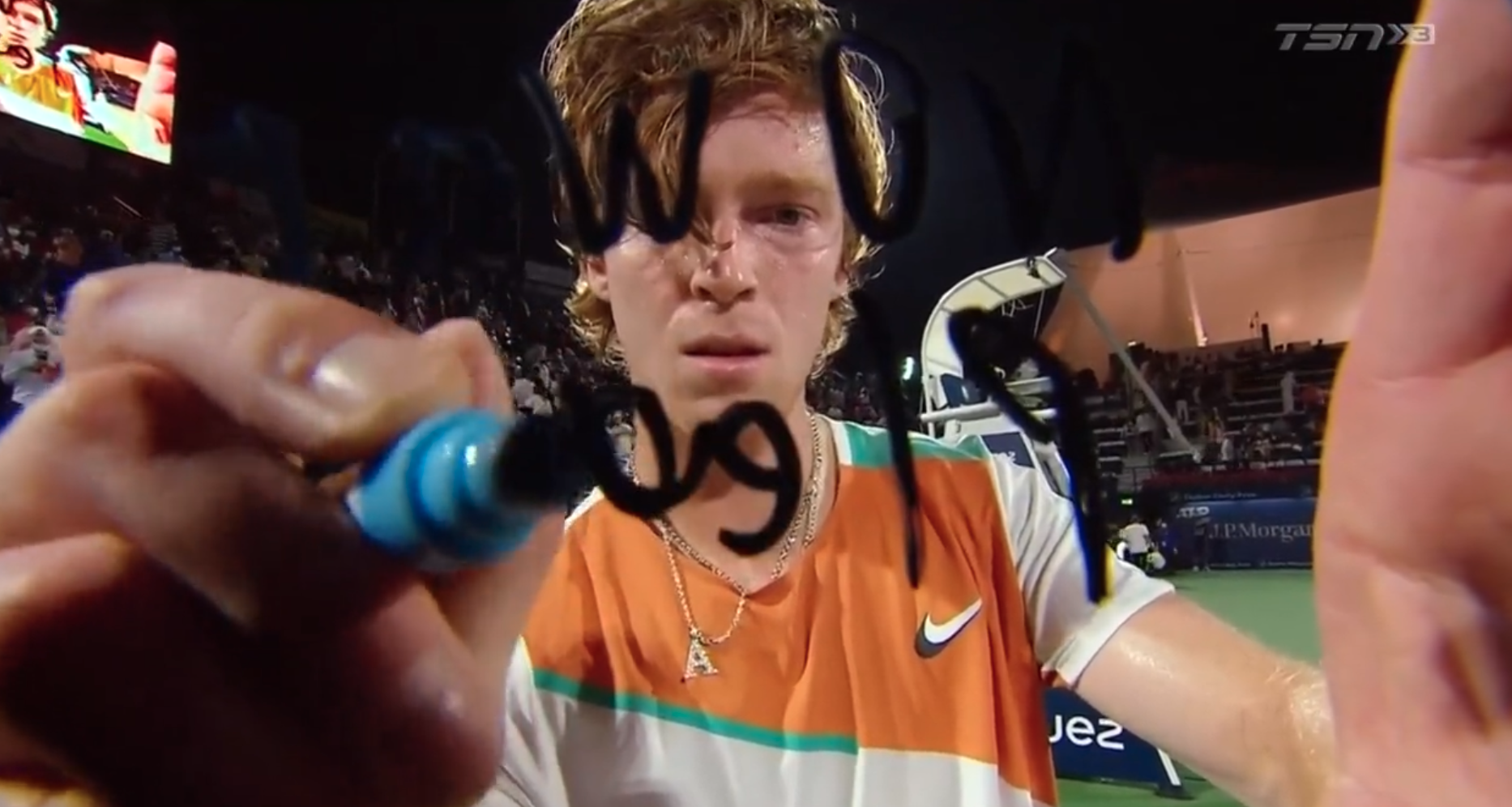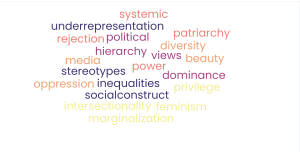1
Section One: The Fundamentals
A) What do we know about sport? What are common assumptions we make about sport and society?
| I completely agree with the statement “sport promotes teamwork and unity”. Many athletes find a so formed family within their sports teams, and the unity is what may even draw some to enjoy the sport that they play. I do believe that this is not the case for everyone unfortunately. I find with sports there is a huge divide upon “good” and “bad” players, those who play at higher levels find some superiority over those who do not. I always recall in gym class not feeling included most when volleyball was being played, that being because half of my gym class played “rep” volleyball at the time. I as well recall trying out for volleyball and not making the cut, however the final team consisted of players who all played “rep” outside of school. I feel many people who are not “sport inclined” do not find the confidence and support to build within their skills to excel further after one negative experience within teamwork. I am positive these negative thoughts and feelings begin within a gym class during elementary school, when someone is the last to be picked on the team. I now think of those who are not fortunate have the opportunity to excel in sports within private classes, this painting a big divide within our society upon opportunity. Teamwork and unity is about acceptance and support, most of which society does not receive within sports. |
Exercise 3: Notebook prompt
What are some other metanarratives about sport that you are familiar with? Find an image or video clip or draw something yourself that captures this idea…
So what? Why does any of this matter? Does it matter? As something we grow up with – live with – play through – we don’t often interrogate the meanings of sport, and perhaps we don’t want to.
But being aware of these assumptions and metanarratives is especially important, I would argue, because of the centrality of sport to our everyday lives, the role that sport plays in shaping our childhood and worldviews and….. [finish that thought]
| But being aware of these assumptions and metanarratives is especially important, I would argue, because of the centrality of sport to our everyday lives, the role that sport plays in shaping our childhood, worldviews, and the community we as society build upon sports. Each metanarrative described within this module may be felt by athletes, coaches, sports officials, and even most certainly by fans and viewers. It is stated that sports are a centrality of our everyday lives whether that is us participating in a sport, or simply viewing it at home on our television. Sports provide community through entertainment, unity, competition, victory, and pride. I think back to the national identity and heritage metanarrative, and how it is exemplified through public events such as the world cup. Attached below is a link showing the pride fans hold not just for the sport of football, but the team who is representing their country during the 2016 Euro cup. I personally feel that all of this matters in the sense that an identity is created for all of society, a moment where much of one country come together to celebrate their passion. Being aware of these metanarratives is important to navigate what one truly loves and feels about sports, this opening your eyes to appreciativeness and awareness of how impactful sports just are within society.
Youtube Link “Lisbon explodes with joy after Portugal win Euro 2016: https://youtu.be/fJD3UV7Z44M?si=3O4XL5T2-vxpYTin |
B) What is social justice?
Exercise 4: Padlet Prompt
Think back to the last section and try to look at some of the ideas we discussed differently. How might sport and social justice actually co-exist?
Record any images, video clips, or gifs you added to the padlet and identify a point of intersection between sport and social justice (can be an issue or a barrier or a debate or something you would like to explore in more depth in this course) . Screenshot or paste in your response below.
| In 2022 a Russian tennis player named Andrew Rublev had just won a match to advance him to the finals in the Dubai Championships. Andrews first task after winning was to walk up to the camera and write on the lens “No War Please”. This message was in relation to the Russia and Ukraine war, at this time it was advancing rapidly as Russias troops had invaded Ukraine’s capital. Andrews message after his game demonstrated activism, advocacy, and resilience upon those who were silenced to not speak on such issues as it was deemed “not appropriate” for a tennis match. Andrew Rublev’s act of support was shocking to many viewers for he had just won a match, and chose this as his celebration. Rublev is just one of the many athletes who speak out against societal issues within sports, using their platform and reaching a wide audience to advocate. This act of service proves that there is a strong connection between sports and advocacy, even for those issues outside of sports context. I feel that Rublev’s actions were that of confidence and courage. From an ESPN article they quote Rublev’s direct words to why he wrote on the lens, he stated, “In these moments, you realize that my match is not important. It’s not about my match, how it affects me,” Rublev said Thursday. “What’s happening is much more terrible.” (ESPN, 2022). Many athletes from around the world continue to perform acts of advocacy, in hopes to reach the whole of society.
Sources: ESPN News Services. (2022, February 25). Russian tennis star Andrey Rublev writes “no war please” after Dubai Semifinal win. ESPN. https://www.espn.com/tennis/story/_/id/33369327/russian-tennis-star-andrey-rublev-writes-no-war-please-dubai-semifinal-win
|
C) Social Justice Reading
(note: this activity is optional!)
D) KINESIOLOGY AND SOCIAL JUSTICE
Exercise 5:
Exercise 6:
What are the implications of bodies-at-risk discourse and the refusal to understand the health gap from a social justice perspective, according to the authors of this article?
| (Harrison, et al., 2021) begins by discussing what is the “bodies-at-risk” discourse, and why may this idea harm society in a social justice perspective? When discussing the idea of bodies-at-risk we are potentially harming those who do not fit into a specific category. Society likes to serve a master narrative to what is the “norm”, and as well likes to categorize those who do not fit such said ideal. When marginalized individuals are categorized outside of the “norm” society is now painting a clear idea that they are “different” than their counterparts (Harrison, et al., 2021). It is important to remember one of of our end goals within social justice and sports is equality, equity, and fair opportunity. In order to meet all three goals set out within society, we need to start with inclusive language and discourses that do not set out to create one single “norm” within society. If we are not to acknowledge these gaps from a social justice perspective we are ultimately harming the achievement and improvement that can be made within kinesiology and societal sports (Harrison, et al., 2021). How will we as society reach our potential without acknowledging the inequities and inequalities that marginalized groups are facing on a daily basis? (Harrison, et al., 2021) provides advice that we are to honour different stories from marginalized groups facing inequities, reframe the way we are painting these individuals in society, and understand there is more than one story, and one way to tell it.
Harrison, L., Azzarito, L., & Hodge, S. (2021). Social Justice in kinesiology, health, and disability. Quest, 73(3), 225–244. https://doi.org/10.1080/00336297.2021.1944231
|
Section Two: Sport Feminism
Exercise 7: Notebook Prompt
What is feminism? What does it mean to you? Choose one of the images below and explain how it captures your understanding of feminism (or find one that does speak to you and paste this into your pressbook with an explanation of why it matters to you.
|
When examining this prompt the first person that had come to mind was Princess Diana, and the remarkable life she lived and exemplified for many women in society. This photo captures the Princess who broke royal protocol to participate in her sons schools mother’s day race. I chose to capture this moment because I believe this is what feminism is in such a broad matter. Many believe feminism to be numerous ideas, represented by numerous individuals within society. In order to be a feminist you do not need to be a regular civilian in society, a certain age, or even a woman in general. Diana shows the love she holds for her son to participate in such an event despite the royal protocol of not running in her skirt. It was clear that royal protocol did not see this activity as “lady like”, and certainly not to be performed in such a public space. Diana exemplified to many women the act of resilience she held within this moment, clearly not worrying about the “consequences”, but the love she held for her children. I feel feminism demonstrates freedom upon women, feeling the ability to participate, advocate, and inspire others to join as well. Diana made such a huge impact certainly because she was not that of a “regular civilian” in society. Many however fell in love with Diana because they felt she was the first royal to demonstrate that she was just like every other women. Many women and society as a whole demonstrate what feminism means, and Princess Diana is just one of the few.
|
Exercise 8: Notes Prompt (optional)
NB: Cornell notes is a great resource that teaches effective notetaking. Unfortunately, our system can’t save notes taken in the H5P app, so this is fully optional.
Exercise 9: Crossword Activity
Exercise 10: Padlet Prompt
|
I personally noticed these terms appearing the most within the article. I find that these terms uncover layers of what feminism and sports reveal. I include the term beauty because there is so much history, depth, and harm associated with women and sports amongst beauty standards. I feel beauty standards have always been set upon women regardless of race, social status, or economic status. I hope that these words attempt to fully paint the picture on the different layers to feminism within sports. |

|
I do feel that the landscape of women’s sports is slowly changing. I’ve always noticed when it came to women and sports, the most society will watch of it is during public events such as the olympics. During the summer 2024 olympics Summer McIntosh was loved by so many Canadians for her astonishing win for the gold. I always ask myself what about these athletes after the olympics, are we watching them then? I find myself falling into the societal trap of “men sports are much more superior”, for I am not a huge sports fan myself, and when I am it is typically big tournaments within NBA, NHL, or FIFA. However I have noticed a huge shift within the rise of the PWHL league and how much people are loving the games and keeping with the rankings. I believe PWHL has set such a strong foundation for young women interested in hockey around the world to work hard for something they never had the opportunity to do before. I have good hopes for the future of feminism and sports, and I myself hope to continue to open to the world of female sports past PWHL and public events like the olympics.
|


:quality(85):extract_cover()/2018/12/16/233/n/24155406/tmp_ZL8Rp5_8828913a8056674f_GettyImages-76214460.jpg)


Feedback/Errata